Ski: 2024-2025 Stöckli Stormrider 95, 182 cm
Test Location: Crested Butte Mountain Resort, CO
Days Skied: ~8
Available Lengths: 170, 176, 182, 188 cm
Blister’s Measured Tip-to-Tail Length (straight-tape pull): 180.4 cm
Stated Weight per Ski (182 cm): 1885 grams
Blister’s Measured Weight per Ski (182 cm): 1821 & 1838 grams
Stated Dimensions: 132-95-122 mm
Blister’s Measured Dimensions: 131-94-119 mm
Stated Sidecut Radius (182 cm): 18.5 meters
Measured Tip & Tail Splay (ski decambered): 47 mm / 10.5 mm
Measured Traditional Camber Underfoot: 6.5 mm
Core Materials: poplar/beech/paulownia + titanal layers + “Freeride tip & tail” inserts + fiberglass laminate
Base Material: sintered “racing graphite”
Factory Recommended Mount Point: -10.2 cm from center / 80 cm from tail
Boots Used: Lange Shadow 130 LV, Atomic Redster CS 130
Bindings Used: Tyrolia Attack 13 MN
[Note: Our review was conducted on the 23/24 Stormrider 95, which returns unchanged for 24/25.]

Intro
The Stormrider name has been a part of Stöckli’s lineup for more than two decades, which is quite the tenure. The latest Stormriders fall into Stöckli’s “All-Mountain Piste” and “All-Mountain Freeride” collections, with the Stomrider 95 falling between the more piste-oriented Stormrider 88 and softer-snow-oriented Stormrider 102.
We’ve been spending time on the two wider Stormriders this season (in addition to the Stöckli Montero AR), and we’re gonna kick off our Full Reviews with the Stormrider 95.
What Stöckli says about the Stormrider 95
“With the Stormrider 95, there are practically no limits. Fresh snow as well as groomed slopes are child’s play for this ski. Its completely revised construction, geometry and binding point, which is a little further forward, means you can enjoy better maneuverability and even more skiing fun. Gliding through the fresh powder or carving on perfectly groomed slopes? Only you can decide what your next day’s skiing should be like.”
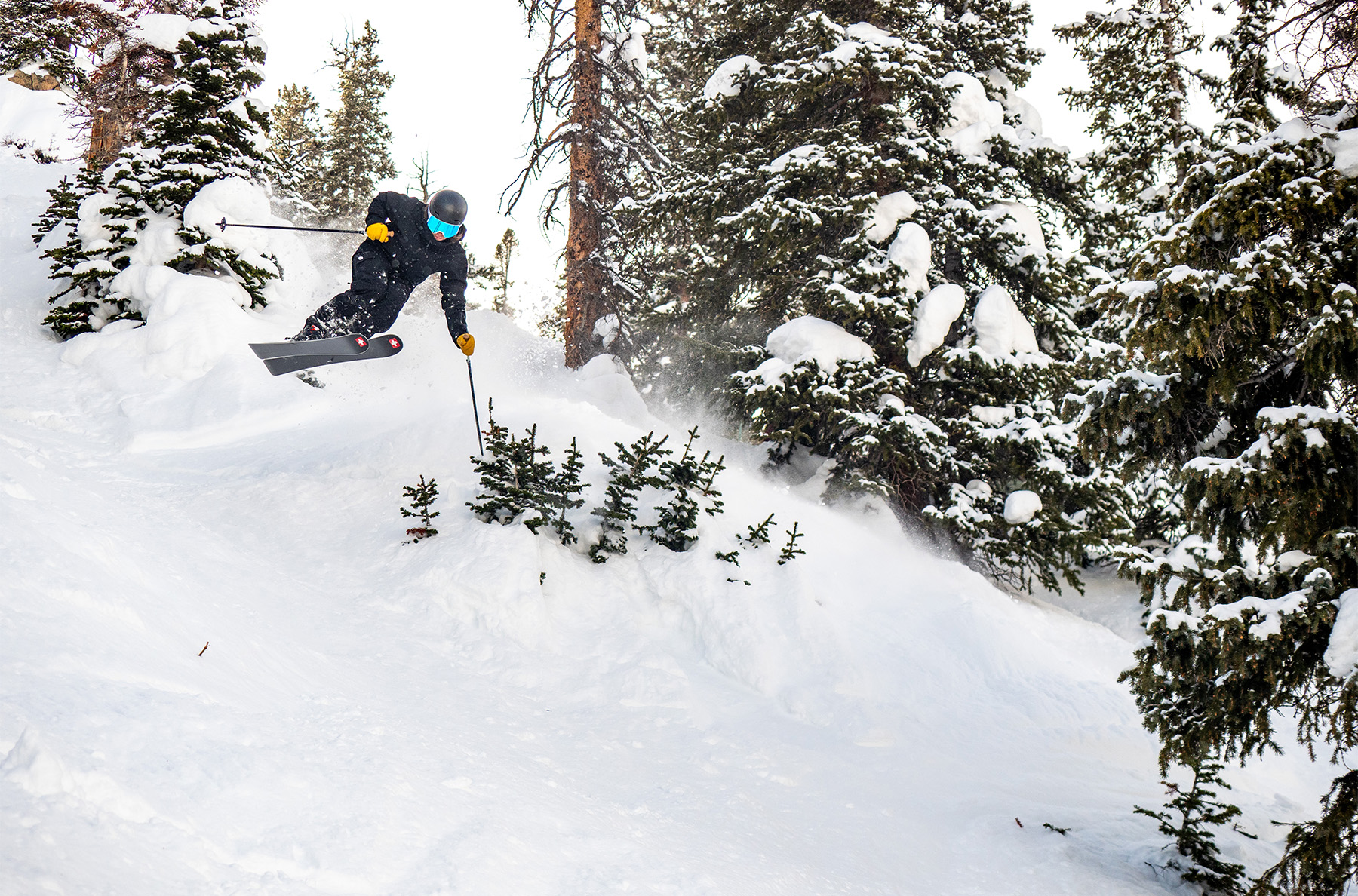
Construction
The Stormrider 95 is made in Stöckli’s Swiss factory, and we immediately noticed its finishing quality — it came with a detailed base structure and the brand’s signature titanal-metal top layer. That metal layer reportedly has the graphics printed directly to it, but then Stöckli says they add a protective coating with a slightly raised structure to reduce scratching.
Underneath, the Stormrider 95 reportedly uses a variety of “particularly light European wood species” for the core, with their “Freeride Tip” insert up front and “Freeride Tail” polymer in the back. The former is meant to reduce swing weight while also making it more stable, while the latter is used in combination with the tail rocker angle to reportedly make the tail both lighter and softer, with the goal of improved maneuverability. The Stormrider 95 also features a “Polywall” sidewall that’s supposed to offer better elasticity, damping, and impact resistance, relative to phenolic sidewalls. Lastly, this ski gets Stöckli’s “Solid Metal Edge Light,” which has the same edge width as the brand’s “Solid Metal Edge” but has shorter inserts (where it slots into the core) to save weight.
Shape & Rocker Profile
The Stormrider 95’s shape and rocker profile fall on the more traditional end of the spectrum for a 95mm-wide all-mountain ski. It doesn’t feature a whole lot of early tapering at its tips and tails and is mostly cambered, with fairly shallow tip and tail rocker lines.
Flex Pattern
Here’s how we’d characterize the flex pattern of the Stormrider 95:
Tips: 6
Shovels: 6-6.5
In Front of Toe Piece: 7-9.5
Underfoot: 10
Behind the Heel Piece: 9.5-8.5
Tails: 8-7.5
The Stormrider 95’s tips and shovels are pretty soft, and then it smoothly (but fairly slowly) ramps up in stiffness as you move to the middle of the ski. The back half mirrors the front, but its tail doesn’t end as soft as the tip (though its tail isn’t super stiff in the grand scheme).
Sidecut Radius
The stated sidecut radius of the 182 cm Stormrider 95 we’ve been testing is 18.5 meters, which is about average for this class — neither super long nor super short.
Mount Point
The Stormrider 95 is a decidedly directional ski with a recommended mount point to match — at about -10 cm from true center, it’s pretty standard for its class.
Weight
At about 1830 grams per ski for the 182 cm length, the Stormrider 95 is on the lighter end of the spectrum, relative to its size, and particularly when compared to other metal-laminate directional skis.
For reference, here are a number of our measured weights (per ski in grams) for some notable skis. Keep in mind the length differences to try to keep things apples-to-apples.
1707 & 1752 4FRNT Switch, 184 cm
1800 & 1824 Romp Zorro 100, 183 cm
1805 & 1833 Liberty Origin 101, 182 cm
1806 & 1884 Head Oblivion 102, 189 cm
1808 & 1823 Shaggy’s Ahmeek 95, 180 cm
1816 & 1819 Head Kore 99, 184 cm
1821 & 1838 Stöckli Stormrider 95, 182 cm
1824 & 1843 Season Kin, 181 cm
1831 & 1844 K2 Mindbender 96C, 178 cm
1869 & 1873 Line Sakana, 181 cm
1880 & 1887 Blizzard Rustler 9, 180 cm
1883 & 1906 Season Aero, 180 cm
1894 & 1919 RMU Apostle 96 Pro, 184 cm
1896 & 1942 K2 Reckoner 102, 184 cm
1901 & 1902 Renoun Endurance 98, 184 cm
1925 & 1934 Black Crows Camox, 186 cm
1929 & 1982 Faction Mana 2, 183 cm
1935 & 1962 Fischer Ranger 96, 180 cm
1938 & 2003 Nordica Unleashed 98, 186 cm
1946 & 1962 Black Crows Atris, 184 cm
1946 & 1968 Salomon Stance 96, 182 cm
1951 & 1957 RMU Apostle 106, 184 cm
1956 & 1976 Blizzard Rustler 10, 186 cm
1975 & 2028 Armada Declivity 102 Ti, 180 cm
1981 & 1991 Faction Dancer 2, 182 cm
1990 & 2045 Peak 104 by Bode, 184 cm
1997 & 2001 ZAG Slap 104, 188 cm
1998 & 2010 Stöckli Stormrider 102, 182 cm
2008 & 2043 ZAG Harfang 96, 182 cm
2019 & 2022 Rossignol Blackops 98, 182 cm
2019 & 2024 Salomon Stance 102, 183 cm
2024 & 2112 Dynastar M-Free 99, 185 cm
2034 & 2060 Peak 98 by Bode, 184 cm
2042 & 2062 Dynastar M-Pro 99, 186 cm
2054 & 2063 Salomon QST 98, 189 cm
2057 & 2061 Fischer Ranger 102, 183 cm
2077 & 2096 Line Blade Optic 96, 184 cm
2079 & 2089 Shaggy’s Mohawk 98, 186 cm
2085 & 2120 K2 Mindbender 99Ti, 184 cm
2112 & 2149 J Skis Masterblaster, 181 cm
2165 & 2186 Wagner Summit 97, 182 cm
2178 & 2195 Volkl M6 Mantra, 184 cm
2281 & 2284 Blizzard Bonafide 97, 177 cm
2326 & 2336 Nordica Enforcer 100, 186 cm
Now, let’s get into how all of this adds up on snow:
FULL REVIEW
Luke Koppa (5’8”, 155 lbs / 173 cm, 70 kg): My personal interest in Stöckli’s Stormrider series was once again piqued when Dylan Wood posted his Flash Review of the Stormrider 102 last season. I’d heard reports about these skis that seemed to vary dramatically — likely because the skis changed so much in the 2+ decades the Stormrider name has been around — so I was eager to see where the latest Stormrider 95 slotted into the current all-mountain market.
Groomers / On-Piste
Luke: For its class, I think the Stormrider 95 is a very respectable carver. There are some standout competitors that are better when it comes to things like turn initiation, edge hold, and/or high-speed composure, but I’ve very much enjoyed carving the Stormrider 95 in a wide range of on-piste conditions.
The Stormrider 95’s fairly soft shovels aren’t dramatically tapered or rockered, so they’re pretty easy to bend and get on edge. This ski doesn’t feel super engaging on lower-angle Beginner trails, but on Intermediate through Expert-rated groomers, I didn’t feel like I was struggling to initiate turns and carve it hard across the fall line.
The 182 cm Stormrider 95 and its stated 18.5-meter sidecut radius seemed like a versatile combo on piste, where I could make tight GS turns at very high edge angles or let it run into bigger Super-G arcs. Doing the latter, especially in more variable, end-of-day groomers, did lead to some nervousness / twitching from its tips, but keeping pressure on its shovels and the ski slightly on edge prevented this from being particularly unnerving.
This is not a really planted or composed ski at very high speeds, relative to the numerous (much) heavier alternatives in its class, but a signature trait of the Stormrider 95 (and Stormrider 102) has been the ride quality. It doesn’t feel “glued to the snow” like a really heavy ski can, but especially in terms of the smaller vibrations you get from conditions like firm groomers, I think these Stormriders do a really impressive job of muting them out and avoiding feeling harsh (given what they weigh). Plus, the Stormrider 95 still produces a bit of energy coming out of a hard carve; it’s not exceptionally explosive in this regard, but it’s far from “dead.”
As for edge hold, I’d say the Stormrider 95 is, again, pretty solid for its class. It’s not best in class, but as I got used to how it initiated, held, and finished carved turns, I eventually found myself feeling pretty comfortable carving it hard on most groomed slopes. The main exception was extremely firm, scraped-off sections that were very smooth and bordering on ice. But in those scenarios, the Stormrider 95 is also predictable to just skid and slide around, or feather between on- and off-edge turns.
Jonathan Ellsworth (5’10”, ~175 lbs / 178 cm, 79.5 kg): I want to begin by echoing Luke’s opening line of his Flash Review of this ski: it almost pains me how much I enjoy this ski.
Increasingly (and I’ve talked about this on a few GEAR:30 podcasts), I like to start testing skis while knowing as little as possible about them — I don’t want to know how much they weigh, their stated sidecut, their mount point, etc. And so just this morning, I looked for the first time at the weight of our Stormrider 95. WTF.
These skis carve — and feel — far better than they ought to at less than 1850 grams per ski. You’ll hear me on this Friday’s GEAR:30 podcast talking to Jeremy Jones and saying for the thousandth time that I personally do not like lightweight skis for inbounds skiing. Welp, these Stormrider 95s are light. And I think they are really nice carvers. And I think they are particularly nice carvers given how well they perform off piste.
That said, I agree very much with Luke’s take on them on groomers. The tips of the skis don’t instantly start dragging you across the fall line — which is an often fun feeling you get from dedicated piste skis. These are not dedicated piste skis (more on this as we go), but the tails of the Stormrider 95 will dig in hard on groomers, providing solid edge hold and inspiring high edge angles.
All-mountain skis will always require a compromise between on-piste performance and off-piste performance. And when it comes to groomers, I think Stöckli’s design of the Stormrider 95 is very smart and very well executed.
Moguls, Trees, & Tight Terrain
Luke: Long story short: I’ve enjoyed this ski a lot more than I expected, and my surprise was most significant in tight, off-piste terrain. I’d heard rumors about the Stormriders being really burly, demanding skis (especially the older versions), but the Stormrider 95 is a pretty accessible and very nimble ski when navigating tight moguls and trees. However, I also found it supportive, precise, and stable enough to push pretty hard when I felt like it.
The Stormrider 95 is not a particularly loose / surfy ski in the grand scheme. It doesn’t feature much tip or tail rocker, and it has a fairly long effective edge for its class — both of which tend to make skis more precise on edge and less inclined to skid and pivot. However, I was consistently impressed by how well the Stormrider 95 avoided feeling too locked in on edge, or like its tips or tails wanted to hook up more than I prefer. Provided you keep your weight biased over the front of the ski, the Stormrider 95’s tails feel easy to release for a directional, 95mm-wide all-mountain ski, even in grippier conditions like the beautiful chalk that’s recently graced the north-facing slopes of Crested Butte Mountain Resort.
This is complemented by the Stormrider 95’s low swing weight, which helps make quick changes of direction and last-second adjustments more manageable than heavier skis. The Stormrider 95’s tail rarely felt punishing to me (only when I smashed into mogul faces while in the backseat), and its softer shovels did a pretty good job of absorbing the impacts from bashing bumps without unpredictably folding on me.
All of this adds up to a ski that I found really rewarding when trying to ski moguls, trees, and other variable off-piste terrain with a dynamic, active style — drive its shovels into a trough, slash out the tails, hop into the next bump line, or load it up and go for a gap. Lots of light-ish skis cater to this style, but the Stormrider 95’s overall ride felt very conducive to it. It feels precise when you need to dig in its edges, but its tail remains maneuverable when you weight the shovels. Those shovels (and tails) feel pretty compliant when hitting compressions, but I’ve personally found its flex pattern to be a really nice middle ground between forgiveness and support.
So, while I had the most fun on this ski while really pushing it and bending it to frequently catch air between turns, it’s also pretty happy to more casually carve or pivot through tight terrain, provided you aren’t trying to do so from a very backseat stance.
This is far from the loosest or most forgiving ski in tight terrain, and it’s definitely not the stiffest or most composed when you’re skiing very fast in rough snow. But I do think a lot of Intermediate through Expert directional skiers could get along with the Stormrider 95.
Jonathan: Yes to all of the above.
One of the most fun things — but also quite rare things — when reviewing products is when they don’t make sense. And when you look at the tails of the Stormrider 95, they very much seem like they ought to get hung up in firm, weird moguls. I.e., that tail shape, which I think is such an asset when carving groomers, should be more of a detriment when skiing funky, off-piste, technical terrain. But I have not found that to be true. Even when skiing pockets of good powder and punchier snow out in CBMR’s Teocalli 2 terrain this past weekend.
The Stormrider 95s don’t really make sense, and I mean that in the best possible way.
Powder, Soft Chop, & Slush
Luke: In shallower soft snow (say, 6” / 15 cm or less), the Stormrider 95 performs admirably for what it is. Despite its shallow rocker lines, I think its tips do a pretty good job of planing up in soft snow for its width; the fact that they’re not very stiff and the ski has a pretty rearward mount point likely helps there. And in soft snow, its tail feels even easier to release and slash than they do on firmer conditions.
I skied some really heavy “hot pow” on the Stormrider 95 one afternoon and was very impressed by how well it handled those conditions. It definitely wouldn’t be my first pick for wet, heavy, soft snow, but it did not feel particularly hooky or prone to sinking and getting bogged down in this snow (which resembled mashed potatoes that could’ve used a bit more butter or water).
In deeper conditions, the Stormrider 95 starts to require a more centered or backseat stance to keep its tips afloat, as is common for ~95mm-wide directional all-mountain models. The wider Stormrider 102 feels notably more practical in deeper and softer snow, but the Stormrider 95 does as well or better in soft snow than many comparable skis in its class.
Jonathan: While I have yet to A/B the Stormrider 95 and 102 on back-to-back runs, I do feel comfortable in saying that I don’t find the 102s to be the “far more” powder-oriented ski than the 95s. I.e., I don’t think that the 95s are the clearly-better-on-hardpack skis, while the 102s are the clearly-better-deep-snow skis.
Mostly, like Luke, I’ve found the 95s to feel surprisingly comfortable in deeper snow, and exceptionally comfortable in soft chop and slush.
Firm Chop & Crud
Luke: As I noted above, the Stormrider 95 and Stormrider 102 have an interesting ride quality. They don’t track along or blow through variable snow like much heavier skis can — especially when skiing faster and hitting larger piles of chop / crud. But, especially given that it’s a pretty light ski (~1830 g per ski @ 182 cm), I think the Stormrider 95 does a really impressive job of reducing the harsh chatter and vibrations you often get from firm, somewhat rough snow.
The word “supple” kept coming to mind while skiing the Stormrider 95 in firm conditions — it doesn’t feel like it has tons of suspension “travel” on tap for big impacts, but the suspension it does offer feels well-managed for smaller / higher-frequency vibrations.
That makes for a nicer overall experience in cruddy conditions than many similarly light skis, in that you don’t feel the full potential force of every single little bump or firmed-up track you run over. However, I wouldn’t say that it makes a super dramatic difference in terms of high-speed composure.
When making fairly big, fast turns in inconsistent snow, the Stormrider 95 does get knocked around a good bit. Focusing on driving its shovels helps keep it more in check, but it’s not a super stiff or straight ski, so you can eventually overpower it when doing so, after which it wants to hook up more and make smaller, tighter turns. I found it predictable in this regard — I didn’t have any unexpected high-sides or anything like that. But I quickly realized that the Stormrider 95 would not be a ski I’d frequently use for, say, hitting drops and airs that required high-speed runouts through dense chop and crud.
Jonathan: Exactly this. When coming out hot out of CBMR’s West Wall into a very moguled runout, the soft shovels of the Stormrider 95 felt like they were undulating quite a bit. And I couldn’t just lean on the shovels like I can with some heavier, stiffer skis. But even when I was getting out of control on the 95, I felt like the skis were forgiving and compliant enough to let me reign in my speed. And overall, the ratio of stability, nimbleness, and won’t-kick-your-ass-ness is quite impressive.
Mount Point, Stance, & Playfulness
Luke: If you’ve read many of our reviews, you’ve likely seen me mention that I tried various directional skis with their bindings moved forward a centimeter or two from their recommended mount points. I often at least try this in order to see if they’ll be more accepting of a centered stance at times, without serious compromises in other regards.
On the Stormrider 95 (and 102), I’ve stuck with their recommended mount points (which are about -10 cm from true center). Especially on the Stormrider 95, its flex pattern, rocker profile, and sidecut / shape all just feel nicely balanced when paired with its recommended mount point (all ski designers reading this just muttered a collective “duh” under their breath).
But even as someone who likes the option to ski centered or forward, I found the Stormrider 95 very intuitive. It was easy to stay slightly forward and engage the front of the ski without feeling like I needed to be way over the front to do so, and in turn, I didn’t feel really off-balance if / when I opted to pop it into the air. I.e., it was easy to feel like I was in the “sweet spot” of the ski without needing to dramatically shift my weight balance one way or the other.
That said, the Stormrider 95 is still a decidedly directional ski and it’s not super playful in the traditional interpretations of that word. It’s not very balanced in the air, isn’t very loose / surfy, and doesn’t ski switch very well. It does have a low swing weight, is pretty energetic when bent, and doesn’t feel super ungainly in the air like some similarly rearward-mounted skis can. But if overall playfulness is one of your top priorities, this isn’t the ski for you.
Jonathan: I typically get along quite well with skis that range from -6 to -12 mount points, and I’ve had no interest in moving the bindings forward on these skis. So seems like Luke and I both are advising that, if you like the sound of this ski, stick to the recommended line.
Who’s It For?
Luke: I think a lot of directional skiers who want a versatile all-mountain ski could get along well with the Stormrider 95. It handles most conditions and terrain quite well for its width, and it can be skied quite aggressively (especially in more consistent snow) but isn’t very demanding.
You should look elsewhere if you prioritize (1) high-speed composure in chop and crud, (2) a loose / surfy ride in off-piste terrain and soft snow, or (3) general freestyle performance.
For the folks who don’t have those particular preferences, the Stormrider 95 does a very impressive job of feeling agile and dynamic in off-piste terrain while still being very enjoyable on piste and avoiding the harsh ride quality on firm snow that often plagues skis that are similarly light.
Jonathan: I’d only add here that, for those of you who assumed that Stöckli skis were burly, unforgiving, and required a high level of expertise, well, that is not true of the Stormrider 95. Lots of Intermediate to expert skiers could all get along with — and advance on — this ski.
Bottom Line
The Stöckli Stormrider 95 is an adaptable all-mountain ski that bucks common trends in several regards. It’s a light ski that rewards an active, light-on-your-feet style in tight moguls and trees, but with that said, it does a truly admirable job of muting out some of the vibrations from firm snow. It can be a precise and exciting on-piste carver under the feet of experienced skiers, yet it’s not particularly difficult to release, pivot, and slash when you leave groomed trails. And while it will best suit directional skiers, its flex pattern can feel intuitive for a wide range of skier levels, from Intermediates to Experts. In short, it doesn’t really make sense.
Deep Dive Comparisons
BLISTER+ members and those who purchase our Digital Access Pass can check out our Deep Dive comparisons linked below. Get our Digital Access Pass to view all our Deep Dives and Flash Reviews, or become a BLISTER+ member today to get access to that and a LOT more, including the best worldwide Outdoor Injury Insurance, exclusive deals and discounts on skis, personalized gear recommendations from us, and much more.
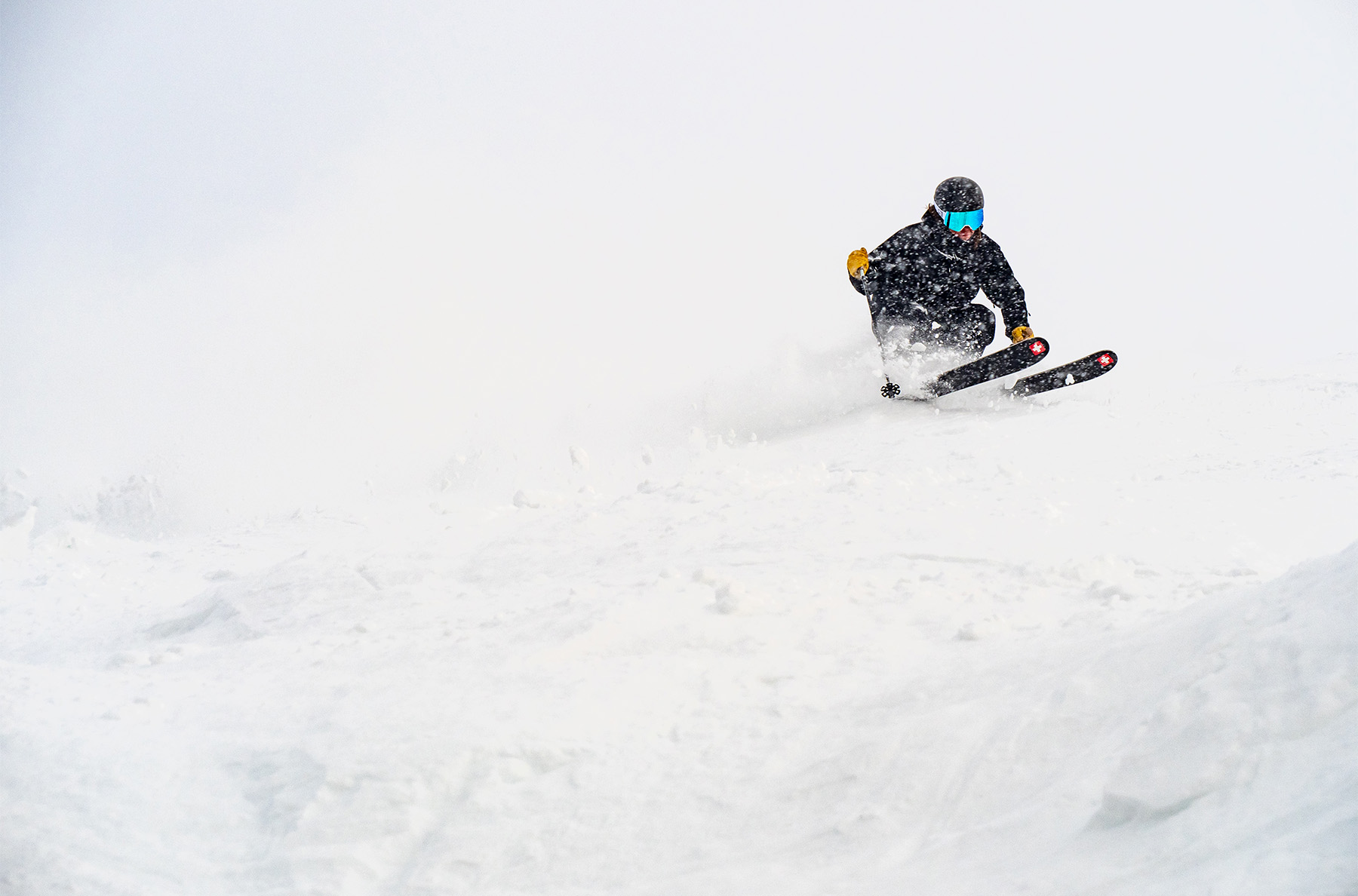
Deep Dive: Stöckli Stormrider 95
We compare the Stormrider 95 to the Stöckli Stormrider 102, Volkl M6 Mantra, Salomon Stance 96, Blizzard Anomaly 94, Nordica Enforcer 99, Fischer Ranger 96, Salomon QST 98, Nordica Enforcer 94, K2 Mindbender 99Ti, J Skis Masterblaster, K2 Mindbender 96C, Peak 98 by Bode, K2 Mindbender 89Ti, Atomic Maverick 95 Ti, Head Kore 93, Blizzard Rustler 9, Shaggy’s Ahmeek 95, ZAG Harfang 96, Faction Dancer 2, Blizzard Bonafide 97, Black Crows Camox, Nordica Unleashed 98, RMU Apostle 96 Pro, Line Blade Optic 96, Armada Declivity 102 Ti, Renoun Endurance 98, Dynastar M-Pro 99, Season Aero, Wagner Summit 97, & Shaggy’s Mohawk 98.
Blister’s Flash Reviews and Deep Dives are accessible to those who purchase one of our paid subscriptions
To get our comprehensive Deep Dives and our initial, unfiltered reports on new gear, become a member and receive many other services, deals, and discounts.
If you’re already an active member, please log in.
(If you’re already logged in and a member in good standing and seeing this message in error, please refresh this page in your browser.)


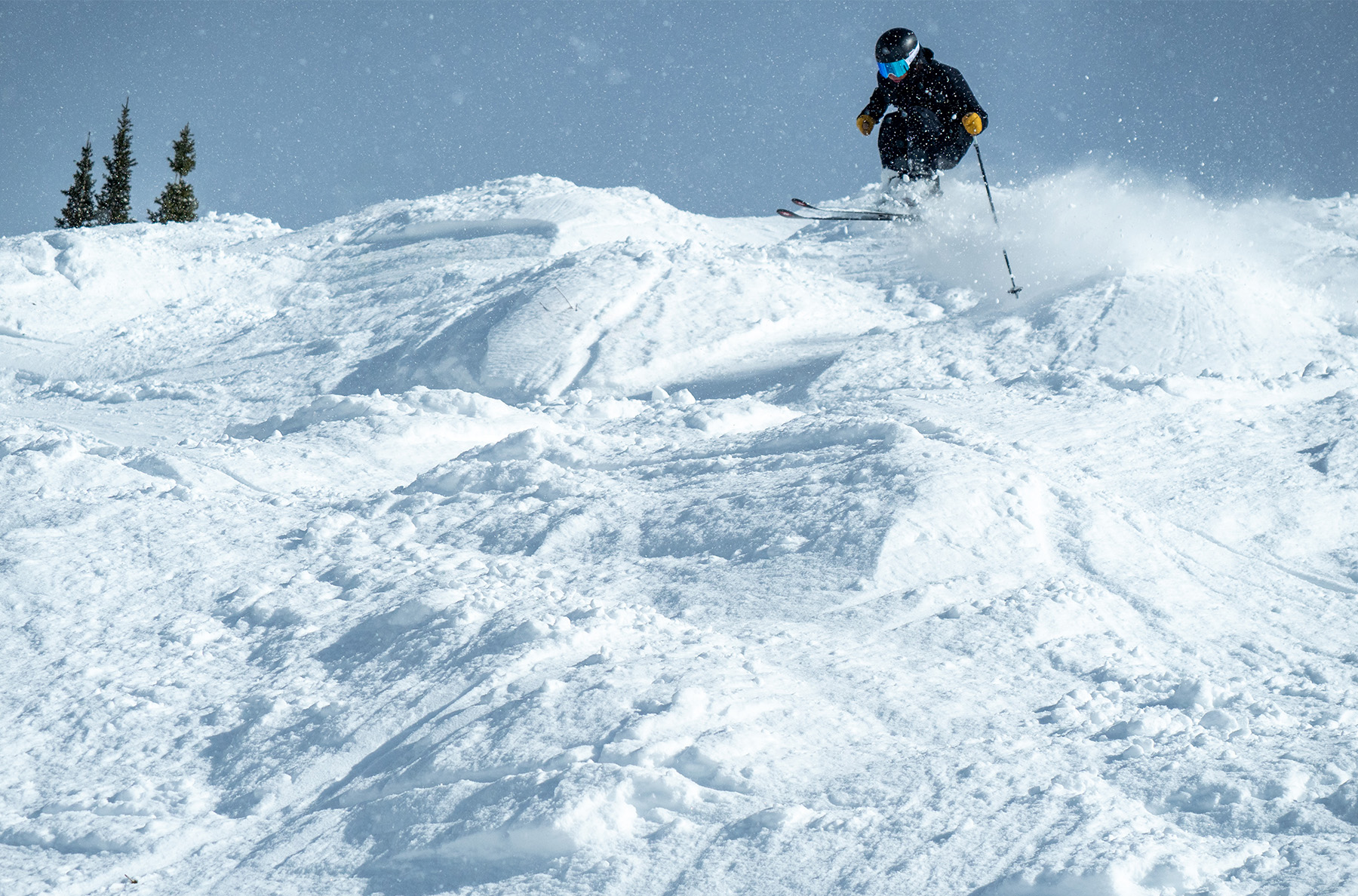
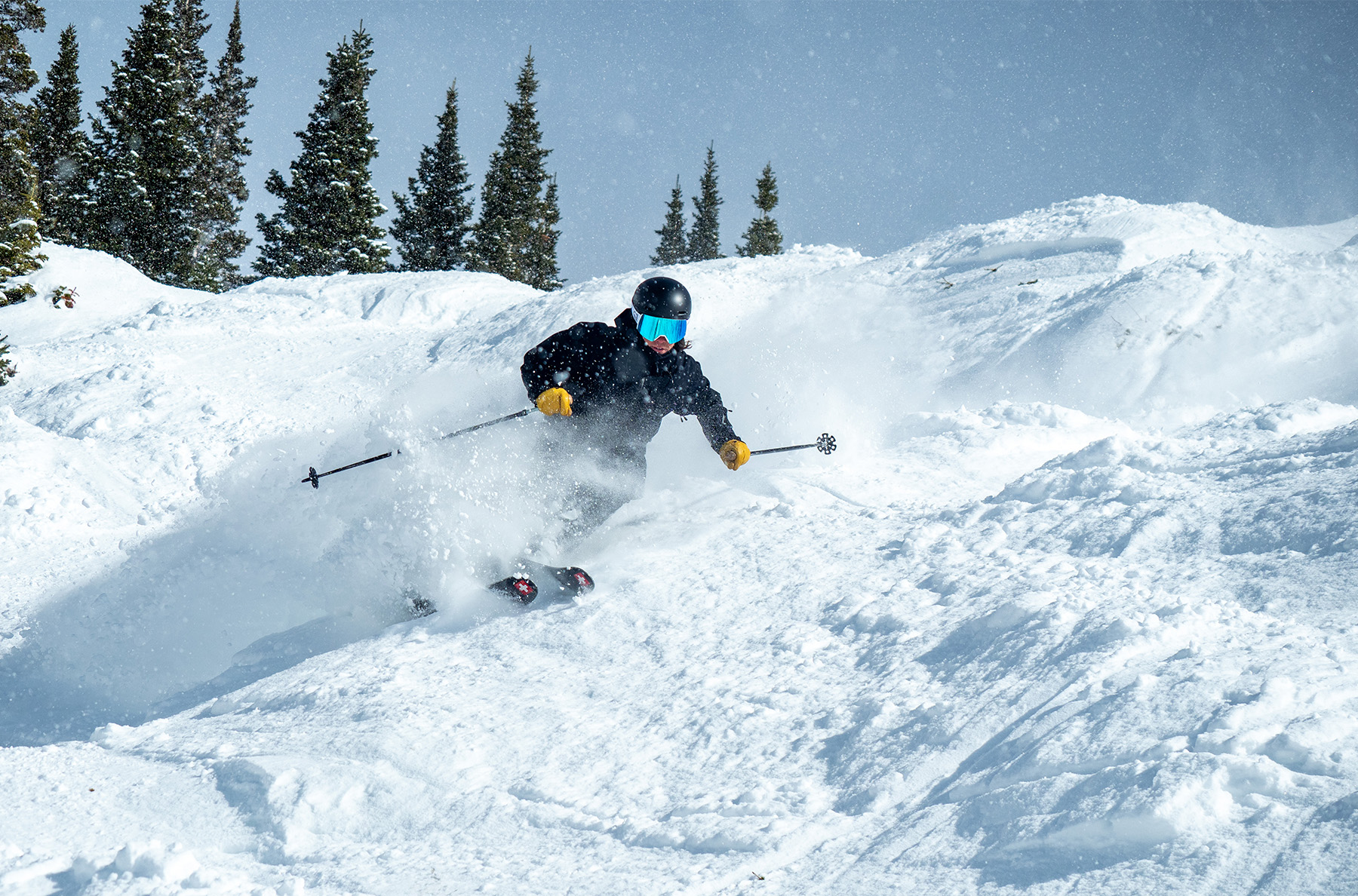

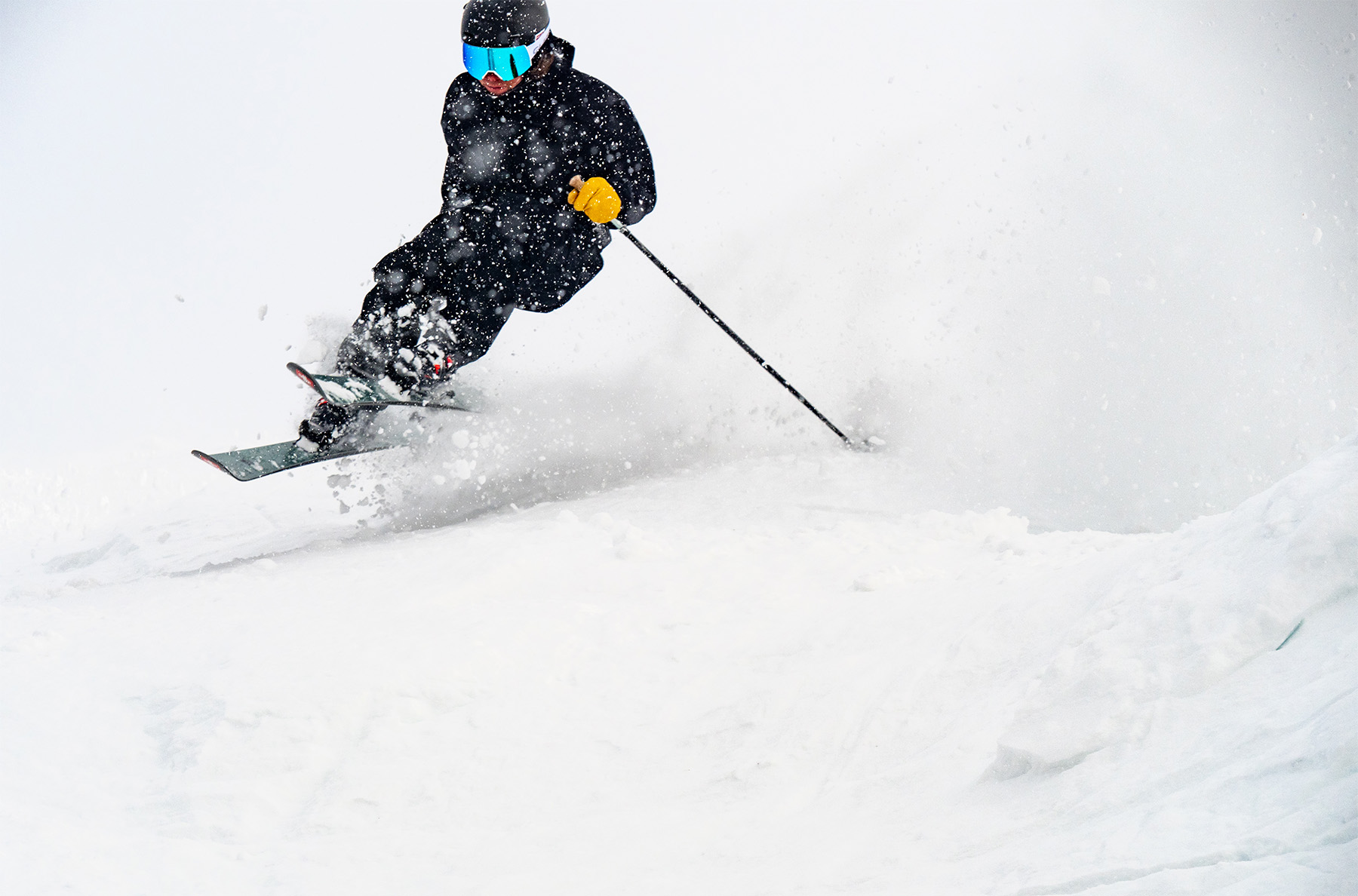
Been skiing SR95s for the last ~5 years, 60~100 days/season, primarily in the East. Generally love how it skis but I’ve gone through 3 pairs. Last one lasted *6* ski days before that fancy Polywall cracked on both skis in the same place (likely during a tram day at big sky last week). Previous one lasted less than two season, again sidewalls cracked on both skis in multiple places. It also fully flat cambered a season in. Version before that had more durable sidewalls but also went full flat within two seasons. Great ski but big mountain ski it is decidedly not.
Any recommendations for something of similar width that would ski similarly (and dampen vibration from that lovely east snowgun and melt-freeze) but would be a bit more robust?
Great review that 100% aligns with my experience demoing these skis each season over the past 8 years. Earlier this season I spent a day testing different skis in this width category in storm conditions ranging from 10 inches of untracked, chopped with variable density, and perfect groomers with two inches of fresh. I found the Stormrider 95s to be light, smooth, mellow, but uninspiring which has always been my experience with these skis. I like the wider QSTs like the 106 and Blank, but found the QST 98 to feel short and squirrelly, with zero tip engagement or stability. Kore 99s were awesome carvers with a ton of energy but the tails are a little stiff for me to release in denser snow. Black Crow Camox felt solid but not very quick or great for me in untracked powder. The winner that day was the Mindbender 99Ti with its combination of weight and power for carving groomers or through chopped snow, with great flotation and easy steering for its width due to a nice blend of rocker and flex. I tried a couple of other brands that were not note-worthy for me.
I always enjoy and appreciate your solid and well thought-out reviews like this one. Keep up the good work.
Photos are top notch on this one!
Thanks! I’m usually behind the camera but handed it off to Kara for these and she did a great job.
Kara took some fantastic pics of you. Who takes them of you when you are behind the camera? L o L… Anyway, I have both the 88 and 102 SR’s. Very different skis, the 88 are easy peasy and super fun, a real favorite. I find the 102 to be much burlier, not interested in low angle noodling. They ski wider than the #’s suggest. Had a funny convo with a Stockli employee calling from Switzerland who told me that they are for only the most demanding skiers… I spoke with Talia at Stockli USA who thought otherwise. I am still waiting for Jonathan’s answer to the question he proposed of wether or not the 102’s are the new version of the old Fischer 102’s? Which I also have. So, while I have too many skis now, I am thinking the 95’s might be the middle bear, just right. Have you skied the other SR’s and how do think they compare to each other?
I also have the 88 (23/24) and the 102 (22/23) SR´s. I love my 102´s, and don´t find them demanding at all Check out the MX-line from Kästle, the MX is demanding. I am not as strong and quick as I used to be, and the SR-line is perfect for an 54 old body.
Oh, you do compare it to the 102’s in the deep dive. Sounds like I’m gonna have to look for a deal on the 95’s. Which means $100 off… they are expensive but they are great.
Sr95s are great while they last. Less than 2 weeks and they blew out the sidewall, both skis, just in front of back binding. Carver they are, all mountain freeride they are NOT. Fun while they lasted but buyer beware! Manufacturing defect that Stockli won’t admit. If you buy them know there is zero warranty!
I have had 6 pair of Stocklis including the “plaid” storm rider 95s. (I Liked them the best of the SRs.)All of these skis, except for my two most recent pair, have had at least 100 days on them. I’ve skied them in “great” to very rocky conditions (especially at CB, unfortunately.) Obviously, skiers are of different sizes and skiing techniques and how they use their equipment may vary, but I have had no problems with the quality or durability of my Stocklis.
Are they an option as a 50/50 ski?
Definitely! 50/50 use always comes down to personal preferences regarding weight, but given that the Stormrider 95 is fairly light for its size and skis very well relative to its weight, I’d say it’s a strong contender for pairing with a hybrid binding for 50/50 use.